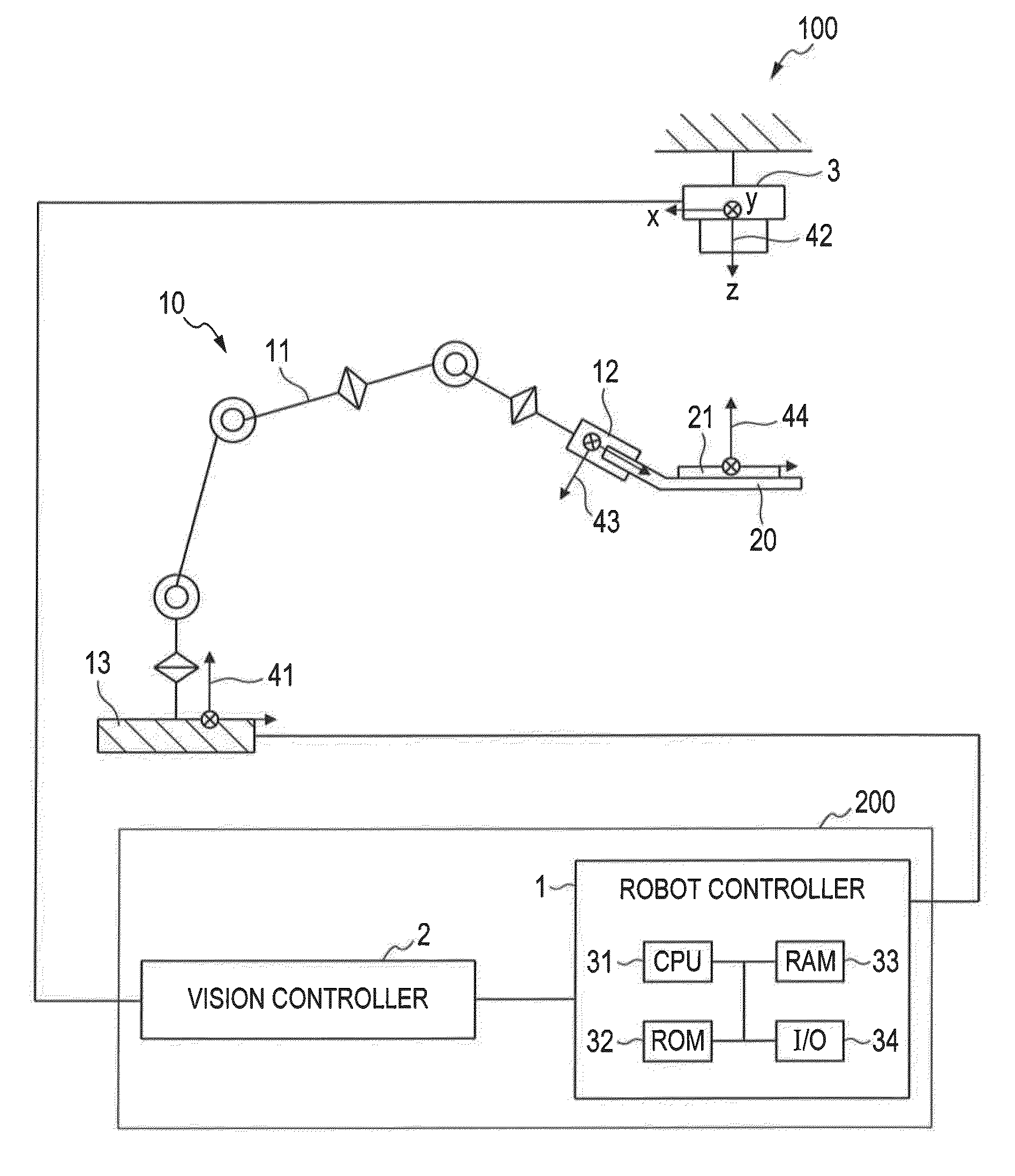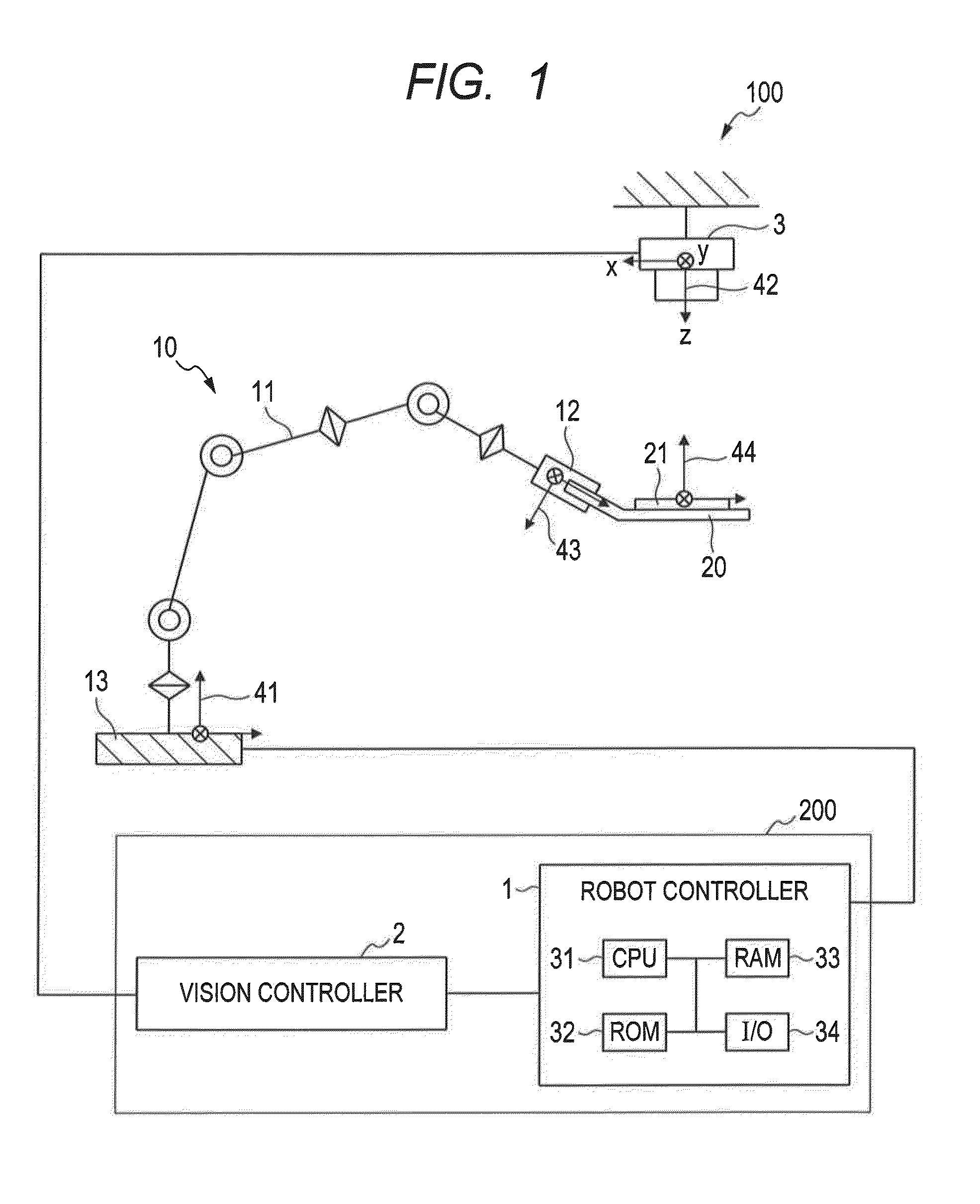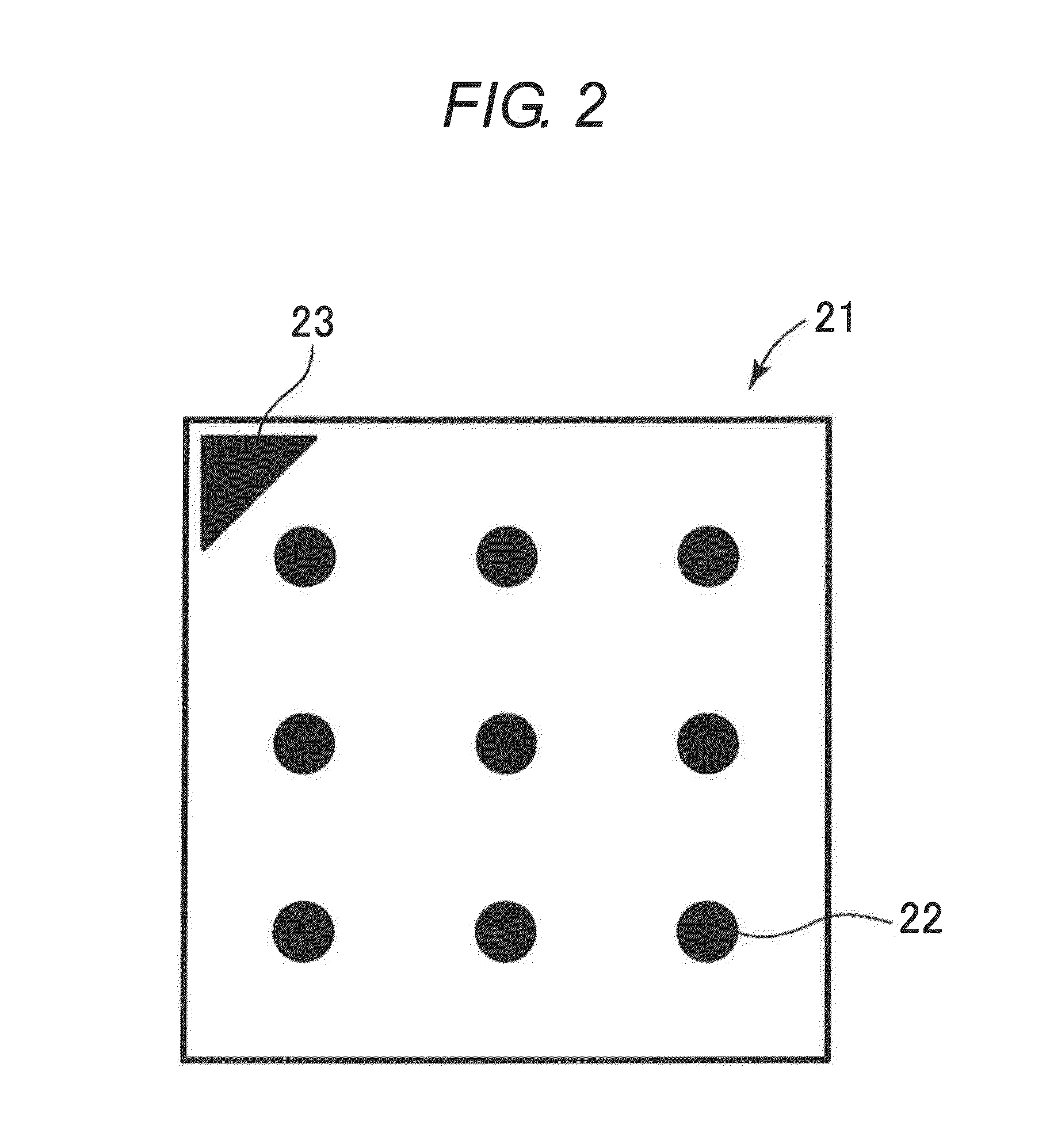Robot system and calibration method of the robot system
a robot system and robot technology, applied in the field of robot systems, can solve the problems of large quantization error, insufficient measurement accuracy of the camera, and insufficient use of the camera, so as to reduce the influence of a large quantization error in the optical axis direction, improve the accuracy of the calibration between the robot coordinate system and the vision coordinate system, and improve the accuracy of the calibration.
- Summary
- Abstract
- Description
- Claims
- Application Information
AI Technical Summary
Benefits of technology
Problems solved by technology
Method used
Image
Examples
first embodiment
[0024]A first embodiment of the present invention will be described with reference to FIGS. 1 to 5. First, a schematic configuration of a robot system of the present embodiment will be described with reference to FIG. 1.
[0026]A robot system 100 of the present embodiment includes a control apparatus 200, a robot body 10, and a camera 3 as a visual sensor. The control apparatus 200 controls a position and an orientation of the robot body 10 and uses a measured value of the camera 3 to calculate the position and the orientation of a work. The control apparatus 200 includes a robot controller 1 and a vision controller 2. The robot body 10 and the vision controller 2 are connected to the robot controller 1. The camera 3 is connected to the vision controller 2. A hand 12 as an end effector of the robot body 10 holds a calibration jig 20. Hereinafter, the components will be described.
[0027]The robot body 10 includes a multi-jointed arm 11 (hereinafter, called “arm”) and...
second embodiment
[0059]A second embodiment of the present invention will be described with reference to FIG. 6. The camera 3 as a visual sensor is fixed at a position different from the robot body 10 in the description of the first embodiment. In the present embodiment, a camera 4 as a visual sensor is placed on the robot body 10. The marker 21 for calibration is fixed at a position different from the robot body 10. Other configurations are the same as in the first embodiment, and differences from the first embodiment will be mainly described.
[0060]The camera 4 is mounted on the tip of the arm 11, and the operation of the robot body 10 can position the camera 4 in an arbitrary position and orientation in the operation range of the robot body 10. The camera 4 is connected to the vision controller 2.
[0061]The vision controller 2 converts an image signal imported through the camera to a contrast signal based on grayscale and stores the contrast signal in the frame memory. The vision controller 2 also p...
third embodiment
[0069]A third embodiment of the present invention will be described with reference to FIGS. 1 to 3B. In the first embodiment, the position and orientations at three teaching points used in the calibration are based on the assumption that the robot body 10 can take the target positions and orientations on the calibration plane A. In the present embodiment, there is an obstacle (not illustrated) below the calibration plane A, and the robot body 10 cannot take at least one of the three teaching points on the plane A that are used in the calibration. The robot body may recognize the existence of the obstacle as known layout information of the robot system 100 set in advance, or the robot body may recognize the existence of the obstacle through imaging by the camera 3.
[0070]Only the setting method of three teaching points used in the calibration is different from the first embodiment. Therefore, differences from first embodiment will be mainly described.
[0071]In the setting method of thr...
PUM
 Login to View More
Login to View More Abstract
Description
Claims
Application Information
 Login to View More
Login to View More - R&D
- Intellectual Property
- Life Sciences
- Materials
- Tech Scout
- Unparalleled Data Quality
- Higher Quality Content
- 60% Fewer Hallucinations
Browse by: Latest US Patents, China's latest patents, Technical Efficacy Thesaurus, Application Domain, Technology Topic, Popular Technical Reports.
© 2025 PatSnap. All rights reserved.Legal|Privacy policy|Modern Slavery Act Transparency Statement|Sitemap|About US| Contact US: help@patsnap.com



